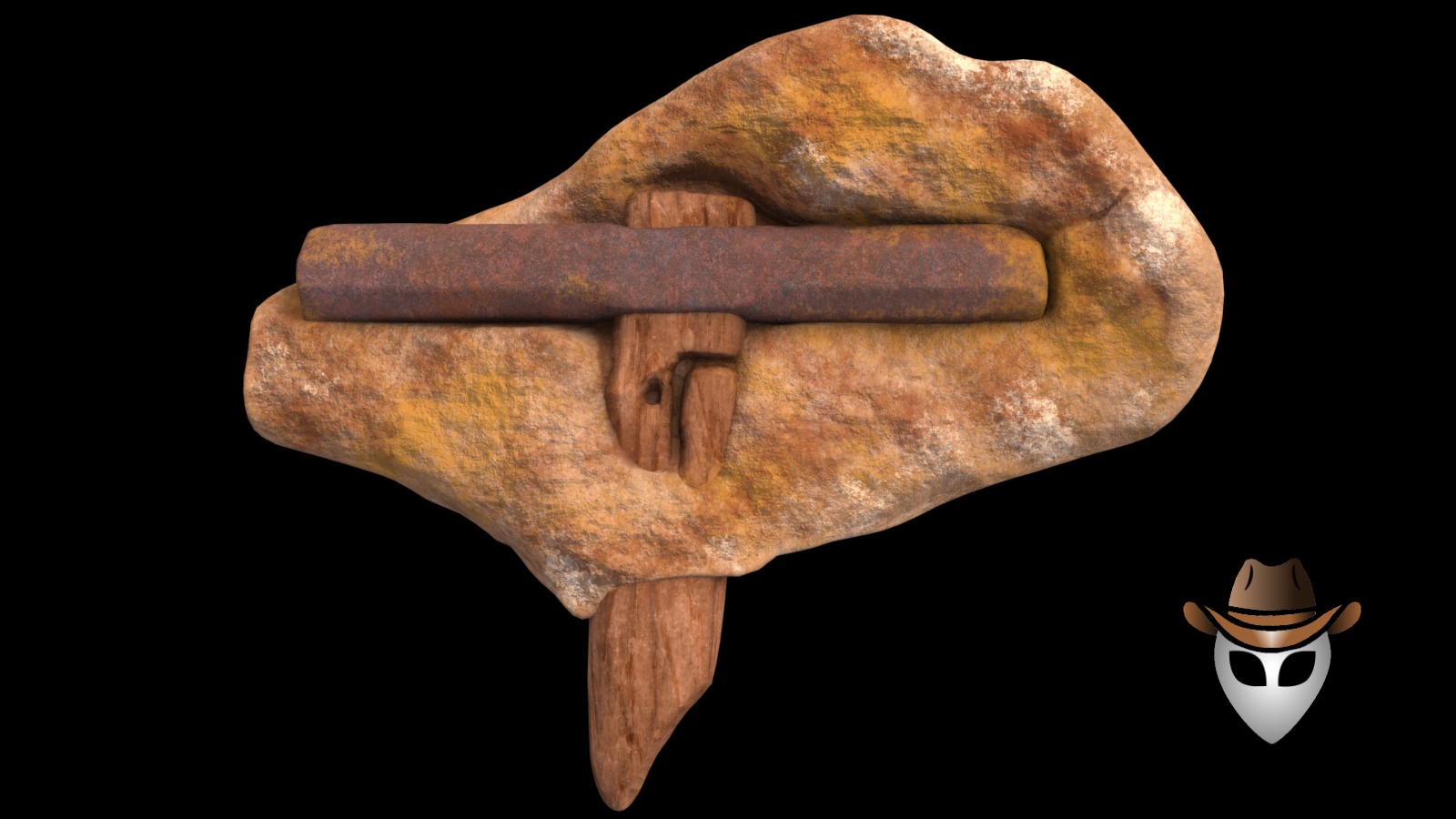The London Artifact Hammer, commonly referred to as the London Hammer, is an enigmatic object that has sparked debate, curiosity, and skepticism since its discovery in 1936 near London, Texas. Its significance lies in the apparent contradiction between its man-made design and the geological strata it was reportedly found within, which some claim dates back over 100 million years. This has led to a wide range of interpretations, from those who see it as evidence of an advanced ancient civilization to skeptics who believe it to be an out-of-place artifact with a much simpler explanation.
The hammer was discovered by a couple, Max Hahn and his wife, while they were out walking along a creek bed near London, Texas. Embedded in a rock, the hammer appeared to be a typical 19th-century tool, but the surrounding rock was alleged to be from the Cretaceous period, raising eyebrows. The artifact consists of a wooden handle and a metallic head, which seems to be made of iron, sparking initial curiosity. The Hahn family kept the artifact in their possession for several years before it was introduced to the wider public.
The London Hammer has also found a home in the creationist community, where it is cited as evidence supporting the idea of a young Earth and the coexistence of humans with dinosaurs. For these believers, the hammer is a sign that mainstream science has misinterpreted Earth’s history. The hammer fits neatly into the narrative of ancient human civilizations or biblical interpretations of human history, making it a symbol in certain religious contexts.
Evidence in Favor of the Hammer’s Mystery
Age of the Encasing Rock: The most compelling argument for those who believe in the hammer’s ancient origins is the age of the rock in which it was found. The rock formation, estimated to be over 100 million years old, places the hammer in a time frame long before humans were thought to have existed. This anomaly has led to suggestions that the hammer could be a sign of advanced ancient civilizations or even evidence of time travel.
Metal Composition: Proponents of the hammer’s mysterious origins argue that the metal composition is unusual. The hammer’s head is reported to be made of 96.6% iron, 2.6% chlorine, and 0.74% sulfur. The absence of carbon, typically used in modern steel manufacturing, suggests to some that the iron was produced using a different, possibly ancient, process. Some argue that the hammer’s purity exceeds what was achievable in the 19th century when carbon steel was already common.
Fossilized Wooden Handle: The wooden handle is partially fossilized, which supporters see as further evidence that the artifact is extremely old. The process of fossilization usually takes thousands to millions of years, suggesting that the hammer was encased in its rock matrix for a significant period.
Evidence Against the Hammer’s Mystery
Concrete Evidence of Forgery or Misinterpretation: Skeptics argue that the hammer is simply an out-of-place modern tool that was somehow embedded in rock through natural processes. One common theory is that the rock in which the hammer was found formed around the object due to chemical processes over a much shorter period, not millions of years. Rocks can form around objects through concretion, where minerals precipitate around a nucleus—possibly the hammer—without requiring millions of years to solidify.
Modern Hammer Design: Another argument against the artifact’s ancient origins is the design of the hammer itself. It closely resembles a 19th-century mining tool commonly used in the American West. Given its ordinary construction, there is no reason to believe that the hammer is older than this period.
Misinterpretation of the Geological Context: Geologists have pointed out that the rock may not be as old as some claim. The stratigraphic context where the artifact was found may have been misunderstood. The hammer’s encasement in rock could have been the result of much more recent natural processes, such as sedimentation and mineralization, which can happen relatively quickly under the right conditions.
Scientific Testing and Lack of Peer-Reviewed Studies: One of the most significant gaps in the evidence for the hammer’s mysterious origins is the lack of extensive peer-reviewed studies. The artifact has not been subjected to rigorous scientific testing in reputable academic settings, and most of the claims about its composition and age come from non-expert sources. Without solid, peer-reviewed research, the artifact’s status remains in the realm of speculation and pseudoscience rather than accepted scientific fact.
The London Artifact Hammer remains a curious, albeit controversial, artifact. On one hand, its encasement in seemingly ancient rock and its unusual metal composition have fueled claims that it is evidence of advanced ancient technology or other extraordinary phenomena. On the other hand, critics argue that the hammer is simply a 19th-century tool that became encased in relatively recent geological formations. Until the artifact is subjected to more rigorous and transparent scientific investigation, it is likely to remain a subject of debate, hovering on the fringe of mainstream archaeology and science. Ultimately, whether the hammer is an ancient relic or simply a misunderstood modern tool, it serves as a fascinating case study of the human propensity to wonder about the past and seek evidence of the extraordinary in the mundane.
Share Your Thoughts!
What do you think about the London Artifact Hammer? Share your thoughts in the comments below!
